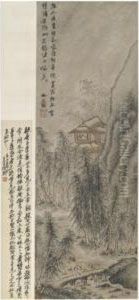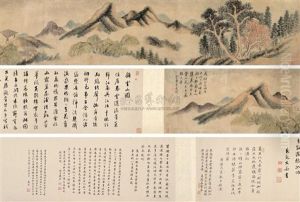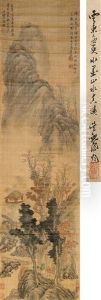Yao Shou Paintings
Yao Shou was a prominent Chinese painter, calligrapher, and art connoisseur who lived during the Ming dynasty, making significant contributions to the Chinese art scene in the 15th century. Born into a period marked by cultural flourishing and political stability, Yao Shou's life and career were deeply influenced by the scholarly and artistic environment of his time. His works are characterized by their delicate brushwork, refined elegance, and profound adherence to the scholarly ideals of literati painting, which sought to express personal morality, cultural refinement, and an intimate connection with the natural world.
Yao Shou's artistic endeavors were not limited to painting; he was also an accomplished calligrapher, a skill highly prized in Chinese culture for its expressive potential and aesthetic value. His calligraphy, often infused with a strong sense of personal style and emotional depth, complemented his paintings and contributed to his reputation as a literati artist—a scholar, painter, and calligrapher who embodied the Confucian ideals of a cultivated gentleman.
Throughout his life, Yao Shou was deeply engaged with the literati circles of his time, participating in scholarly debates, artistic gatherings, and poetry sessions. This intellectual and cultural milieu not only influenced his artistic style but also allowed him to contribute to the theoretical discussions about art that were prevalent during the Ming dynasty. His works, therefore, were not just visual representations but also intellectual endeavors that reflected the philosophical and aesthetic discussions of his era.
Yao Shou's legacy is preserved in his surviving paintings and calligraphic works, which continue to be studied and admired for their beauty and depth. Through his art, Yao Shou has left an indelible mark on the history of Chinese painting, particularly in the realm of literati art, where his contributions to the development of personal expression and the integration of poetry, calligraphy, and painting have been particularly influential. His life and work remain a testament to the rich cultural heritage of the Ming dynasty and the enduring appeal of Chinese literati art.



